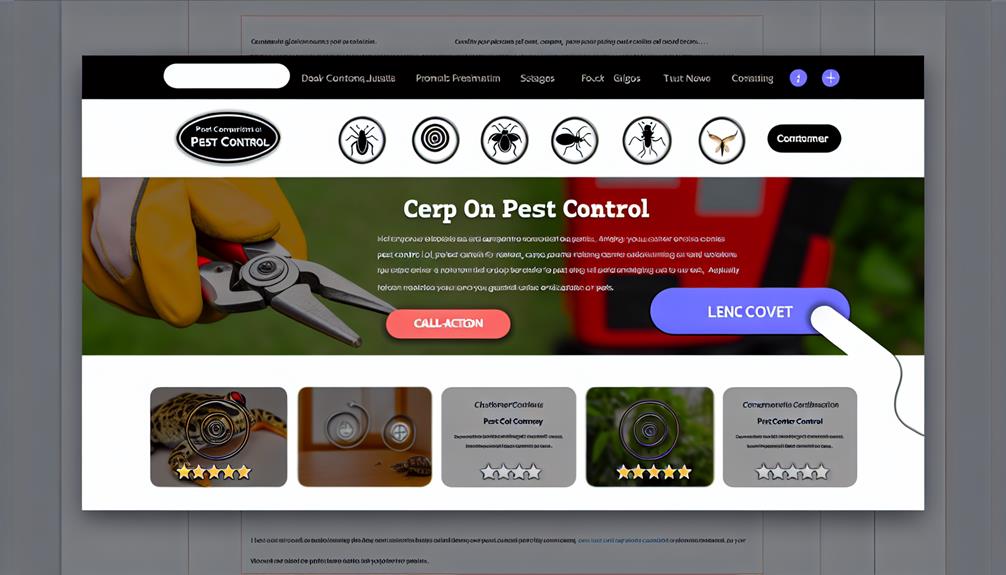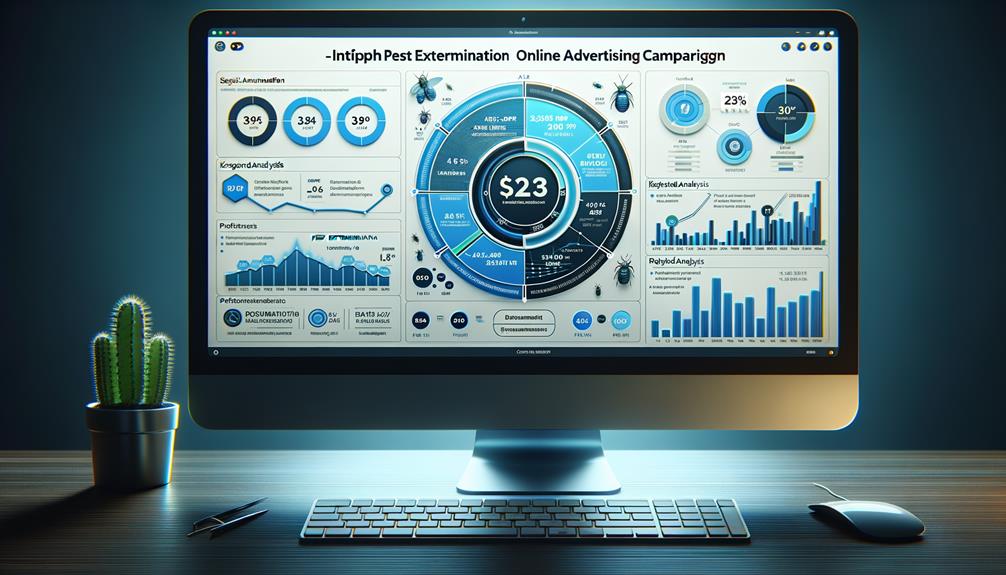Did you know that the pest control industry spends over $7 billion on digital advertising each year? With such a significant investment, it’s crucial to ensure that your pay-per-click (PPC) campaigns are optimized for success.
From selecting the most effective keywords to creating compelling ad copy and designing high-converting landing pages, there are several key strategies that can elevate your PPC efforts in the pest control industry.
As you navigate the competitive landscape of online advertising, understanding these top strategies can make all the difference in attracting qualified leads and maximizing your return on investment.
Table of Contents
ToggleKey Takeaways
- Comprehensive keyword research is crucial for targeting potential customers online and improving visibility in search engine results.
- Compelling ad copy that emphasizes unique selling points and addresses pain points of the target audience is essential for engaging potential customers and driving conversions.
- Designing high-converting landing pages with visual appeal, clear calls-to-action, and mobile optimization can optimize conversion rates.
- Crafting clear and concise call-to-action strategies that incorporate elements of urgency, personalization, and benefit-driven language can boost conversion rates and drive valuable actions.
Understanding Pest Control Keywords

To effectively target potential customers online, you need to understand the significance of using specific pest control keywords that resonate with your audience and drive conversions. This understanding begins with comprehensive keyword research. Identifying the most relevant keywords that potential customers are using when searching for pest control services is crucial. It allows you to optimize your website content, ads, and landing pages for those specific terms, increasing the likelihood of being found by your target audience.
Moreover, SEO optimization plays a pivotal role in ensuring that your pest control website ranks well for the identified keywords. By incorporating these keywords strategically into your website’s meta tags, headings, content, and image alt tags, you can improve its visibility in search engine results. This enables potential customers to discover your pest control services when they’re actively seeking solutions for their pest problems.
Crafting Compelling Ad Copy
Crafting compelling ad copy that incorporates the previously identified pest control keywords is essential for engaging potential customers and driving conversions. When it comes to ad copywriting techniques, it’s crucial to emphasize the unique selling points of your pest control services.
Use persuasive messaging strategies to highlight your expertise, reliability, and the effectiveness of your pest control solutions. Incorporating keywords seamlessly into your ad copy can improve relevance and quality score, which ultimately leads to higher ad rankings and lower costs per click.
To create effective ad copy, focus on addressing the pain points of your target audience. Highlight how your pest control services can alleviate their concerns about infestations, property damage, or health risks. Use strong calls-to-action to prompt users to contact you or visit your website to learn more.
Remember that testing different ad variations and analyzing performance data is crucial for refining your ad copywriting techniques. Continuously monitor and optimize your ad campaigns based on the insights gained from click-through rates, conversion rates, and other relevant metrics to maximize your PPC success in the pest control industry.
Designing High-Converting Landing Pages

When designing high-converting landing pages for your pest control business, focus on creating a seamless user experience that drives action and encourages conversions. To achieve this, prioritize the following key elements:
- Visual Appeal: Incorporate visually appealing graphics and images that resonate with your target audience. Use high-quality photos that showcase your pest control services and demonstrate your expertise. Additionally, consider using videos to provide engaging and informative content that captures visitors’ attention and encourages them to take action.
- Conversion Optimization: Implement clear and compelling calls-to-action (CTAs) that guide visitors towards taking the desired actions, such as scheduling a pest inspection or requesting a quote. Use persuasive language and strategically place CTAs throughout the landing page to maximize conversion opportunities. Furthermore, conduct A/B testing to refine the page elements, such as headlines, copy, and CTA buttons, to continuously optimize for higher conversion rates.
- Mobile Responsiveness: Ensure that your landing pages are fully optimized for mobile devices. With an increasing number of users accessing the internet via mobile, it’s crucial to provide a seamless and user-friendly experience across all devices to maximize conversions.
Implementing Call-to-Action Strategies
For optimal conversion rates on your pest control landing pages, strategically deploy compelling and action-oriented call-to-action (CTA) strategies. Conversion optimization is key to driving customer engagement and generating leads. Start by crafting clear and concise CTAs that guide visitors towards taking the desired action. Use strong action verbs such as ‘Call Now,’ ‘Get a Free Quote,’ or ‘Schedule an Inspection’ to prompt immediate responses.
Additionally, consider incorporating urgency and scarcity elements into your CTAs to create a sense of FOMO (fear of missing out) and drive quicker conversions. For example, phrases like ‘Limited Time Offer’ or ‘Act Now While Slots Last’ can spur visitors to act promptly.
Another effective strategy for improving customer engagement is to utilize personalized and benefit-driven CTAs. Tailoring your CTAs to address specific pain points of your target audience can significantly boost conversion rates. For instance, instead of a generic ‘Contact Us,’ try ‘Get Rid of Pests Today and Enjoy a Pest-Free Home Tomorrow.’ By highlighting the unique benefits and solutions your pest control services offer, you can better resonate with potential customers and drive higher engagement.
Always A/B test different CTAs to identify the most effective ones for your audience and continuously refine your approach for optimal results.
Monitoring and Optimizing Campaign Performance

To ensure the success of your pest control PPC campaigns, it’s crucial to continually monitor and optimize their performance for maximum impact and ROI. Here are three key strategies to help you effectively monitor and optimize your pest control PPC campaigns:
- Conversion Tracking: Implementing robust conversion tracking is essential for understanding which ads and keywords are driving valuable actions on your website, such as form submissions or phone calls. By tracking these conversions, you can make data-driven decisions to optimize your campaigns for better performance.
- Budget Management: Regularly review and adjust your budget allocation to ensure that your advertising spend is directed towards the most effective campaigns and keywords. This will help you maximize the return on investment and prevent overspending on underperforming areas.
- Performance Analysis and Optimization: Continuously analyze the performance of your PPC campaigns, including click-through rates, cost per click, and conversion rates. Use this data to make informed optimizations, such as refining ad copy, adjusting bids, or targeting specific geographic locations, to improve campaign performance.





